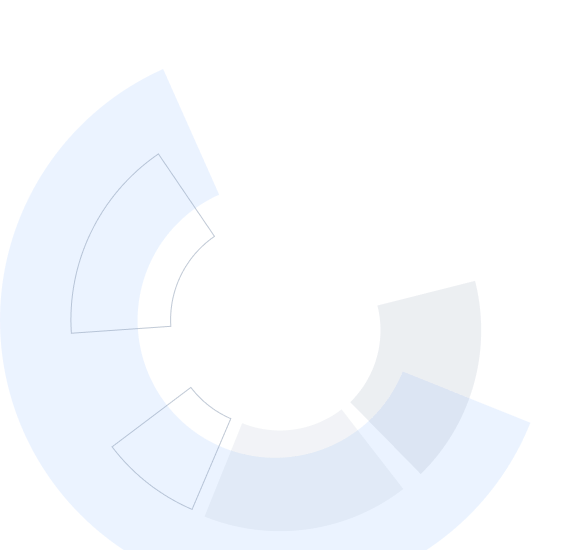NLP Career Path: Jobs in Natural Language Processing
March 19, 2025
Article



Build skills to improve health & save lives. Learn foundational building blocks of humanitarian program planning, implementation, and evaluation.



Instructors: Mija Ververs




19,640 already enrolled
Included with 
(703 reviews)
(703 reviews)

Add to your LinkedIn profile



Add this credential to your LinkedIn profile, resume, or CV
Share it on social media and in your performance review

This specialization is intended for people working or aspiring to work in global health programming. You will learn the foundational building blocks of effective program planning, implementation, and evaluation in a variety of settings, including low- and middle-income countries and humanitarian crises.
Applied Learning Project
Learners will complete a project in each course. Along the way, you will analyze a health system, propose a primary health care intervention, develop a community health worker training plan, propose a humanitarian intervention, analyze a community undergoing change, and perform a health belief assessment.
Welcome to our course on Understanding and Strengthening Health Systems for Global Health. During the course we will provide you with an overview of the main elements or building blocks of a health system based on the World Health Organization’s guidance. You will have the opportunity to explore four main areas of health systems in global health with particular reference to low and middle income countries. The first area focuses on understanding health service organizations, the challenges. Our second module looks at WHO’s six major building blocks or health systems components with particular reference to primary health care and the need for community participation in planning, delivery and assessment of these systems components. in our third module we examine the specific systems component of human resource development and capacity building. The fourth area consists of health policy making and advocacy with stakeholders. This course is geared toward learners who are already involved in managing health and development programs on the ground in low and middle income countries or who are preparing for such a management role. The main lectures will span a four-week period with approximately 2-4 hours of viewing learning materials per week. We have one peer graded essay wherein you will use skills in ‘organizational’ diagnosis to better understand a challenge in an organization where you are or have worked. There are also quizzes. We hope you will engage with your fellow learners in discussion forums to learn from each other.
This course, Public Health in Humanitarian Crises 1, introduces discussions about the public health approach to problems experienced by people affected by disasters, both natural and related to conflict. The course discusses the many changes which occur in people’s lives when they are uprooted by a disaster, ranging from changes in disease patterns, access to health care, livelihoods, shelter, sanitary conditions, nutritional status, etceteras. We will explore what humanitarian interventions could look like if we want to mitigate the effects of disasters. The course content is a mix of theoretical knowledge and many practical examples from recent disasters. We think this course is unique because it contains so many practical ‘real-life’ examples and is taught by instructors and guest lecturers who together have over 200 years of experience in this field.
The course consists of 10 modules totaling approximately 9-10 hours of delivered content with an additional 2-3 hours of self-work (quizzes and writing and evaluating a short peer-review assignment) as well as lively discussions forums. The course has been designed in a way that each module builds on the lessons of previous modules. However, you may do the modules in any order and some can be done separately. You do not have to pay for this course if you choose to enroll without a certificate. Sometimes referred to as auditing, enrolling without a certificate means that you will have access to all of the videos, quizzes, assignments, and discussions. The only difference is that you will not receive a certificate upon completion. Click the Enroll Without a Certificate link to sign up and begin the course. Even if you enroll in a session that has yet to begin, you may access most of the course materials right away by clicking the Preview Course Materials link. However, you will have to wait for the session to begin before posting your comments on the discussion forum or accessing the final peer-reviewed assessment. Visit the Learner Help Center for details about session schedules. If you want to learn more, there is a second course which follows this one entitled, Public Health in Humanitarian Crises 2. We welcome you to take this. The course has a similar set-up and discusses additional topics, such as infectious disease outbreaks, disease epidemiology, maternal and newborn health, mental health, humanitarian project design, humanitarian principles, and many other topics.
This course explores why primary health care is central for achieving Health for All. It provides examples of how primary health care has been instrumental in approaching this goal in selected populations and how the principles of primary health care can guide future policies and actions.
Two of the most inspiring, least understood, and most often derided terms in global health discourse are “Health for All” and “Primary Health Care.” In this course, we will explore these terms in the context of global health, their origins and meanings, the principles upon which they rest, and examples of how these principles have been implemented at both small and large scale. We will also explore some ultra-low-cost approaches to Health for All through primary health care, and the promise that primary health care holds for eventually achieving Health for All. Each module of this course consists of approximately one hour or lecture, approximately one hour of additional readings or video presentations, and two additional hours devoted to studying for each of the quizzes, writing and evaluating two short peer-review assignments, and participating in the discussion forums. Developed in collaboration with Johns Hopkins Open Education Lab.
Health behavior lies at the core of any successful public health intervention. While we will examine the behavior of individual in depth in this course, we also recognize by way of the Ecological Model that individual behavior is encouraged or constrained by the behavior of families, social groups, communities, organizations and policy makers. We recognize that behavior change is not a simplistic process but requires an understanding of dimensions like frequency, complexity and cultural congruity. Such behavioral analysis is strengthened through the use of a toolkit of theoretical models and practical frameworks. While many of such models and frameworks exist, in this course we will review the Health Belief Model, Social Learning Theory, Theory of Reasoned Action, the Trans-Theoretical Model and the PRECEDE Framework. After building your behavioral analysis toolkit with these examples, you will see that actual behavior change program planning uses a combination of ideas and variables from different models, theories and frameworks. Ultimately we aim to encourage course participants to apply the idea that successful programs are theory based as they go about involving people in improving their health.
In bringing about behavior change in public health, we often focus on the individual mother, student, or farmer. We should not forget the community structure and norms constrain for encouraging individual health behaviors. This course examines the community context of the changes needed to promote the public’s health. We begin by examining the various definitions of ‘community’ and the processes by which we ‘diagnose’ or seek to understand the structure and characteristics of different types of communities.
An appreciation of community similarities and differences is necessary lest we fall into the trap of designing one-size-fits-all interventions. We need to recognize that no matter that outsiders may view a community as poor or neglected, we can find strengths and capacities for improvement in each community. Identifying community capacities and resources is the first step in facilitating community change. Different practical and philosophical approaches to change and therefore, examined. Specific to the change process is our recognition of the need for communities to participate in the design, implementation and evaluation of any intervention. We examine the concept of participation in an effort to see how different levels of involvement may affect sustainability of community change efforts. Finally a case study of a community participatory approach to onchocerciasis control in Africa is presented. Community Directed Intervention has subsequently been successfully applied to providing other essential primary health care services by and in the community, such as insecticide treated bednets, malaria treatment, vitamin A distribution, deworming medicines, and pneumonia and diarrhea case management.
Volunteer community health workers (CHWs) are a major strategy for increasing access to and coverage of basic health interventions. Our village health worker training course reviews the process of training and continuing education of CHWs as an important component of involving communities in their own health service delivery. Participants will be guided through the steps of planning training and continuing education activities for village volunteers. The course draws on real-life examples from community-directed onchocerciasis control, village health worker programs, community case management efforts, peer educators programs and patent medicine vendor training programs, to name a few.









The mission of The Johns Hopkins University is to educate its students and cultivate their capacity for life-long learning, to foster independent and original research, and to bring the benefits of discovery to the world.





Unlimited access to 10,000+ world-class courses, hands-on projects, and job-ready certificate programs - all included in your subscription
Earn a degree from world-class universities - 100% online
Upskill your employees to excel in the digital economy
You should be able to complete the specialization in approximately six months, but you are free to work at your own pace.
The specialization does not require any background knowledge of the subject.
You should take Understanding and Strengthening Health Systems first, but you may take the rest of the courses in any order that you wish.
Johns Hopkins University does not offer university credit for completion of this specialization or the individual courses.
This course is completely online, so there’s no need to show up to a classroom in person. You can access your lectures, readings and assignments anytime and anywhere via the web or your mobile device.
If you subscribed, you get a 7-day free trial during which you can cancel at no penalty. After that, we don’t give refunds, but you can cancel your subscription at any time. See our full refund policy.
Yes! To get started, click the course card that interests you and enroll. You can enroll and complete the course to earn a shareable certificate, or you can audit it to view the course materials for free. When you subscribe to a course that is part of a Specialization, you’re automatically subscribed to the full Specialization. Visit your learner dashboard to track your progress.
Yes. In select learning programs, you can apply for financial aid or a scholarship if you can’t afford the enrollment fee. If fin aid or scholarship is available for your learning program selection, you’ll find a link to apply on the description page.
When you enroll in the course, you get access to all of the courses in the Specialization, and you earn a certificate when you complete the work. If you only want to read and view the course content, you can audit the course for free. If you cannot afford the fee, you can apply for financial aid.
Financial aid available,